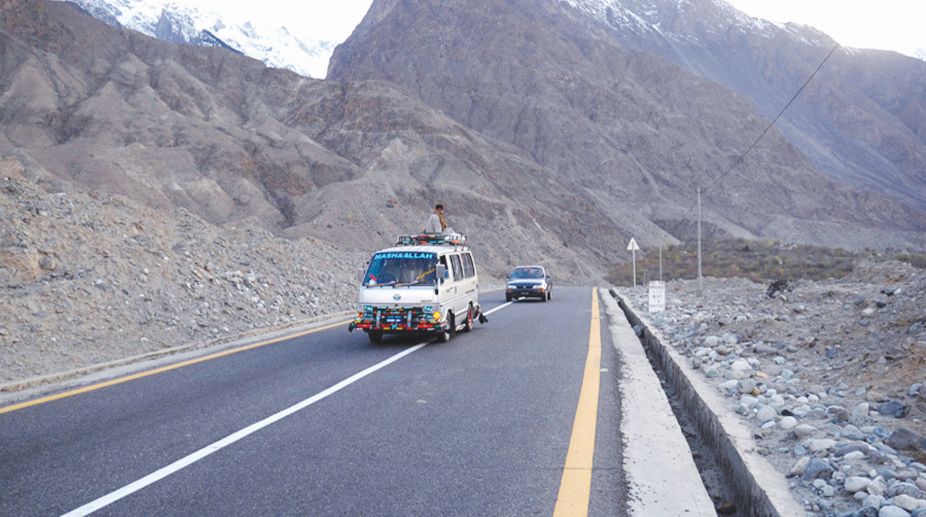Every now and then, there is a revived intention of returning to the table to restore dialogue with Pakistan and with other countries of the region. Though many efforts have been made in the past not much has ever been achieved, for the obstacles are formidable and governments have hesitated to enter into close engagement with uncertain neighbours.
In the circumstances, efforts to bring about fresh expectations in neighbourhood exchanges have been largely unavailing, nor is there any expectation that things may change in the future.
Between India and Pakistan, where the issues are most closely contested, there is little room for any sort of flexibility; the solemn efforts that briefly brought the two sides into dialogue a few years ago, what became known at the time as the ‘comprehensive dialogue’, are now little more than minor way stations along a largely barren path.
As the record makes plain, dialogue between India and its neighbours to the east and west has tended to be tentative and cautious: there are good reasons why this should be so but there are also good reasons for exploring the possibilities more fully, for little is gained by reducing even further the currently very limited exchanges across the border and shutting down the normal give-and-take that even unfriendly neighbours find it necessary to maintain.
It has been pointed out that even at the height of the Cold War, there was little letup in the frequent exchanges and structured dialogue between the Soviet Union and the West, for both sides felt that there was abiding need for maintaining lines of communication between them so as to remain alert to matters of peace and security.
The situation in South Asia is in striking contrast, for lines of communication, that were never well established from the start, have become progressively more scanty and exiguous, so that neighbours that understood each other at one stage even if they could not agree, are now comprehensively estranged and have very little formal dialogue among themselves.
Lines of communication are further reduced by the mistrust and hostility generated by the unending incidents of violence along the border, these being virtually self-sustaining and able to escalate into dangerous conflict.
Despite the difficulties and the provocations, India and Pakistan have not taken formal steps to abandon the structure of conciliation, and they keep returning to the effort to find a safer course between their conflicting demands. ‘Composite Dialogue’ may not be an active process under present conditions and the fitful resumption of talks between the two sides has not brought to a halt the violent incidents of terrorism that continue to affect and derail the peace in South Asia.
And even though the two sides still maintain diplomatic relations between themselves there is little cooperation between them, let alone a sustained effort to strengthen the ties they share. Yet keeping the flickering flame alive has its own value, and occasionally, when circumstances have permitted some useful steps have been possible.
The agreed agenda for bilateral exchanges is an ambitious one, and nobody has repudiated the agreed structure of the talks, even though not much may have been done to agree on further steps for the future. Yet some useful agreements have come out of the engagement, especially on trade and economic matters. Pakistan has blocked several initiatives aimed at easing trade and economic exchanges, but the exchange of goods has kept moving nevertheless.
Traders from both sides of the LOC have developed considerable interest in trade, from which they do well and which they would like to expand. Left to their own devices, the traders in the border zone, driven largely by their direct interest, would no doubt push for enlarged and liberalized trade., and when there is some easing of the situation they are quick to take advantage.
The border area of POK has now thrown up some fresh challenges and glimmerings of change that require attention. Most prominent among these is the CPEC corridor being promoted by China, which aims to connect POK with points on the Gulf, thereby establishing a new access route through Pakistan to POK and beyond to Xinjiang and other points in Central Asia.
This alignment is part of the envisaged opening up of the region as a whole through a number of connecting links leading to China, and as this route encroaches on Indian territory it is firmly opposed by New Delhi. Nothing daunted, China has not shelved its interest in this venture though it has adopted a somewhat cautious manner of promoting it.
China has made more than one effort to persuade India to join it in fashioning a global arrangement for trade and cooperation based on their shared experience and their common interests, sometimes even harking back to the earliest days of the independence of the two countries when it seemed that coming closer could be helpful to both of them.
In keeping with its expanded global vision, Beijing has recently tried take a broader view and find more constructive responses to some of India’s concerns and those of the region.
Although Beijing constantly tightens its links with Pakistan and treats it as the most privileged among its friends, it also tries to keep lines of communication active with the major regional powers, especially India.
Much has been said about Chabahar and about India’s strengthened naval presence in the Gulf. With the Prime Minister’s recent visit to Oman a new dimension has been added to India’s relationship with that region; already it was a close and friendly association and now it offers more than it did in the past.
The military aspect of the relationship may well prove to be relatively modest ~ the maritime countries contiguous to India have been cautious in assuming any military posture, perhaps because they find greater comfort and security in maintaining a low profile and avoiding gestures that could have troublesome consequences.
There are signs that the MEA leadership is making fresh efforts to readjust the balance in dealing with China, something that is undertaken periodically, especially when there is a change of incumbency at the top.
It is striking nevertheless that at the present juncture a number of new diplomatic initiatives are being taken and a somewhat unsettled Indian Ocean neighbourhood is emerging, which is an early test for MEA and its new leadership; India has been accustomed to consider the Indian Ocean islands as its natural partners and obviously needs to reaffirm its historic ties with them.
As indicated above, there is also something to be done to restore relations of mutual confidence. And at the same time it could be worth assessing how far confidence can be restored. Suddenly. Indian diplomacy has become more active and there are many irons in the fire.
The writer is India‘s former Foreign Secretary










